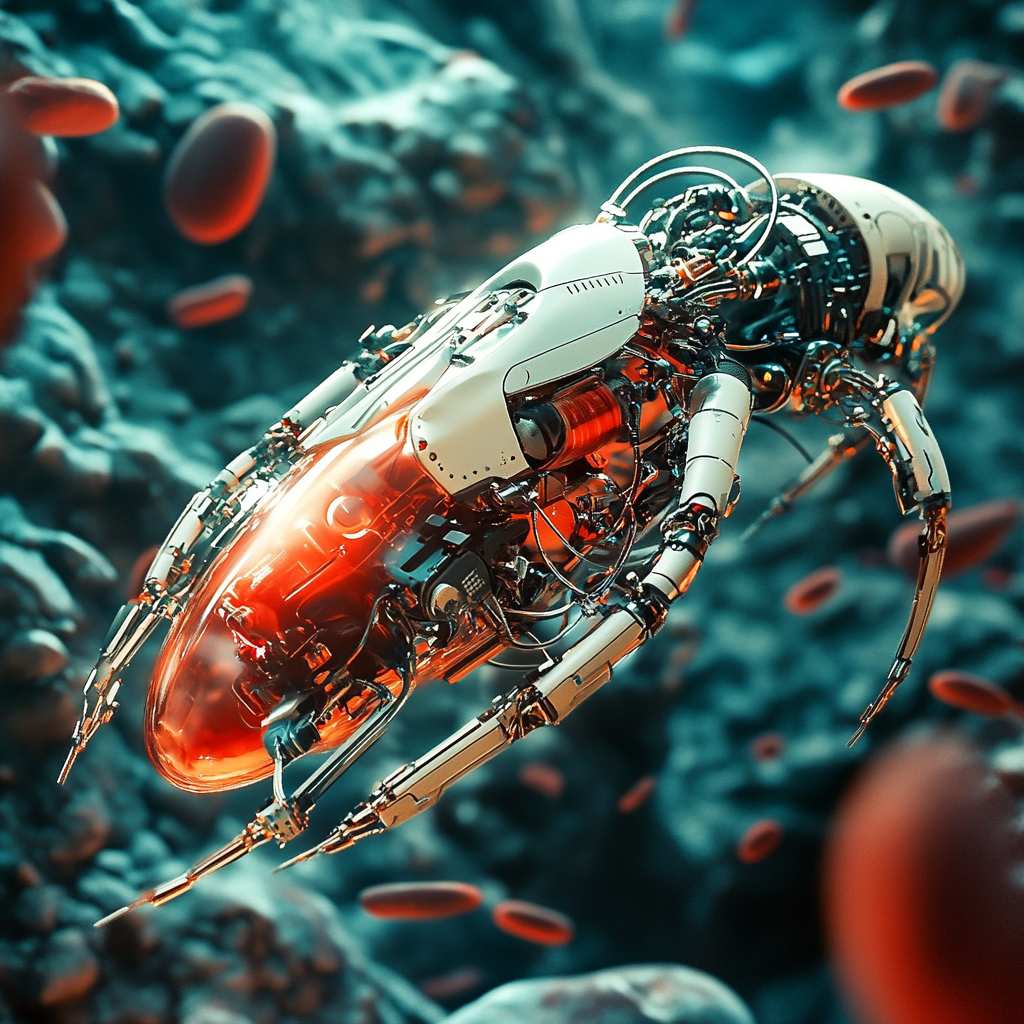
Motor Neurons and Cardiomyocytes Power Biohybrid Swimming Robot
Biohybrid Swimming Robots: Riding the Wave of Tomorrow’s Tech
Imagine a robot that swims like a fish, its movements as fluid as the water it glides through. This is not the stuff of science fiction; it’s an exciting reality brought to life through the wondrous innovation of biohybrid swimming robots. At the forefront of this fascinating field, researchers have decided to throw the limits of biology and technology into the blender, allowing inspiration from nature to spark a revolution in robotic design. And honestly, how cool is that?
So, let’s dive into the nitty-gritty of what makes these biohybrids unique—after all, they’re more than just fancy toys for tech enthusiasts; they have the potential to change the game in multiple industries.
The Anatomy of Biohybrid Wonders
Let’s break it down, shall we? At its core, biohybrid swimming robots are a fancy mix of living cells and synthetic materials. Think of it as a mad scientist’s dream come true! Researchers from Brigham and Women's Hospital in the U.S. and the iPrint Institute in Switzerland took human-made materials and spiced them up with human-derived cells to craft a tiny swimmer that elegantly mimics the motions of a ray.
What Are We Working With?
-
Human Cells: Everything starts with motor neurons and cardiomyocytes—but don’t let the technical terms scare you. Here’s the scoop: these cells are derived from human pluripotent stem cells, which are basically skin cells that have chosen a different life path. Motor neurons are like the co-pilots, steering muscle movement, while cardiomyocytes keep things pumping—literally.
-
Synthetic Scaffold: Imagine a flexible mesh that serves as the skeletal framework for the robot. This jewel is fashioned from carbon nanotubes mixed with gelatin, giving it the strength to perform while still being light and maneuverable. No one wants a robot that sinks faster than a rock.
-
The Brainy Control System: Every swimmer needs a captain, and for our biohybrid beauties, that’s the electronic processor. Thanks to integrated Wi-Fi, this system allows human operators to command the robot’s fins remotely, telling it where to swirl and twirl in the water.
The Mechanics of Motion
Now, how do these tiny wonders of technology actually swim? The process involves several painstaking steps that would have even the most patient of us pulling our hair out.
-
Creating Cells: First, science wizards cultivate those all-important motor neurons and cardiomyocytes from human stem cells.
-
The Assembly Line: Next, they embed those cells into a specially designed scaffold, helping them take shape and mimic the swim fins of a ray.
-
The Spark of Life: Here’s where things get intense. The motor neurons form what we call electrical synapses with the cardiomyocytes, transmitting signals just like a well-oiled machine.
- Command Central Activated: With the electronic brain at the helm, researchers can send Wi-Fi signals that direct muscle contractions, turning thought into action right before your eyes.
What Can These Robots Do?
Hold tight—because the abilities of these biohybrid swimming robots might just blow your mind. These aren’t your standard-issue R2-D2s; think of them more like the athletes of the robotic world.
-
Precision Movement: Imagine a swimmer making sharp turns and agile movements, and you’ve got these robots down to a tee! They can zip around at impressive speeds of up to 0.52 ± 0.22 mm/s while looking sleek.
-
Energy Efficiency: Unlike your typical battery-hungry robots, biohybrids operate like pros. They convert electrical signals into muscle contractions, meaning they don’t run out of juice halfway through their swim.
-
Amazing Endurance: Thanks to their nifty electrical synapses, these swimmers can stay afloat longer. We’re talking about a swimming duration of around 150 seconds—cough cough, that’s about 7.5 times longer than you’d find with run-of-the-mill chemical synapses.
The Potentials Are Boundless
So, where do we go from here? The development of biohybrid swimming robots unleashes a tidal wave of possible applications that could rock the robotics world.
-
In Medical Research: These robots could pave the way for groundbreaking studies related to brain and muscle diseases, stepping up as next-gen organoids-on-a-chip. If you thought petri dishes were where all the action was, think again.
-
Autonomous Robotics: Picture autonomous systems that can learn and adapt—all thanks to the inspiration from biohybrids. A world where robots can make decisions and react on their own? Well, that might not be so far-fetched.
Final Thoughts
So there you have it—biohybrid swimming robots, the nifty creation that sits at the crossroads of biology and technology, is setting sail for uncharted waters. As researchers continue on their journey of pushing the boundaries of innovation, we can expect to witness more sophisticated robots that don’t just swim but could redefine our interaction with machines altogether. As they become more advanced, who knows what marvels will emerge from the deep? The future looks bright, or perhaps, bioelectric!
Want to stay up to date with the latest news on biohybrid robots and other cutting-edge technologies? Subscribe to our Telegram channel: @channel_neirotoken

